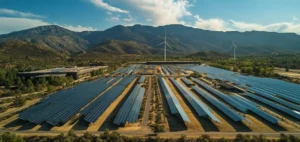In line with forecasts announced by ISO New England, a 365 MW drop in large-scale solar power generation and 3,186 MW in behind-the-meter solar generation will be recorded, when the eclipse reaches its peak.
What’s more, these conjectures raise a host of questions, not least about the reliability of the power grid and the need for sound energy planning to mitigate the impacts of this decline.
Impact on Energy Production
This decline will be felt throughout North America, from Mexico to the United States and Canada. The figures highlight the growing challenge facing the regional power grid.
Variations in solar production highlight the crucial importance of energy diversification and flexible infrastructure to meet the many fluctuations in supply and demand.
Evolution of Solar Production
While solar capacity figures show an upward trend in the region, the ecliptic episode is a reminder that 2020-2030 crystallizes the “solar decade”. Increased reliance on solar energy raises questions about the reliability of the power grid, and requires careful planning.
The transition to a renewable energy economy undoubtedly offers opportunities for economic growth and technological innovation. At the same time, however, this transition requires efficient management of resources and infrastructure.
Energy Capacity Additions
Projects to add energy capacity include a significant share of battery storage and wind power. This reflects a shift towards more stable and predictable renewable energy sources.
By investing in energy storage technologies and smart grid management systems, North American countries – and the USA in particular – aim to ensure the reliability and resilience of the power grid in the face of numerous climatic and environmental challenges.
The solar eclipse scheduled for April 8, 2024 highlights the countless challenges and opportunities of the energy transition. This event highlights the urgent need for optimal planning and diversification of energy sources to ensure the constancy of the North American power grid. Commitment to sustainable energy policies and the adoption of innovative technologies will spearhead a safer, cleaner and more resilient energy future for generations to come.






















